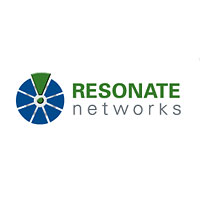 Attitudinal targeting ad network Resonate Networks has announced a $5 million series A round of financing led by Greycroft Partners and iNovia Capital. Read the release.
Attitudinal targeting ad network Resonate Networks has announced a $5 million series A round of financing led by Greycroft Partners and iNovia Capital. Read the release.
Resonate Networks CEO Bryan Gernert discussed his company’s new funding and the data-driven advertising landscape.
How is the funding environment today in ad tech? Is data resonating?
While venture firms certainly remain selective, we found the market very receptive to companies like us offering an entirely new type of ad targeting solution that isn’t just another “me too” behavioral targeting solution or data company. There is good amount of money available for fresh ideas.
Why were Greycroft Partners and iNovia Capital the right partners to lead your series A round of investment? What were you looking for?
First, we were looking for depth of experience in digital media, and more specifically, firms who shared our excitement about the opportunity to bring more sophisticated audience targeting to brand advertisers. Second, we wanted to work with early stage venture firms that can help us grow the business from our very rapid start to a much more mature growth stage company. Having spoken with many venture firms around the country, we think our partnership with Greycroft and iNovia is a home run. They understood immediately the power of our model and the value Resonate brings to brand advertisers.
What can you share about traction you’re seeing for Resonate Network’s attitudinal targeting offering?
Attitudinal targeting amongst brand advertisers has seen positive traction in the past year. As brand advertisers continue to move more of their budgets online, they need a way to find the best and most relevant audience for their brand. Traditional online advertising falls short for brand advertisers by primarily focusing on direct response goals and short term purchase intent. By tapping the values, beliefs and attitudes which are at the heart of consumers’ purchase decisions and brand loyalty, advertisers are better able to identify, reach and connect with their desired audiences on a level that isn’t possible with traditional online targeting alone.
Where is the market today for the use of data in advertising and marketing? Is it still early days or has the data opportunity “matured” enough that it can even attract brand dollars?
At a macro level, it is still early in the application of more advanced data to online audience targeting. One thing advertisers haven’t fully realized yet is the degree to which they can fine tune their messaging to precise audiences within a campaign using more advanced targeting. Two key questions which remain to be resolved are whether the data quality problems appearing from standalone data providers continue, and whether behavioral targeting models can actually scale.
Will Resonate Networks sell media along with its data? Why or why not?
In our view, brand advertisers are looking for a more sophisticated, thoughtful solution to their business problem, not more cookies and point solutions. Resonate’s model fundamentally includes both our proprietary attitudinal data and targeting algorithms as well as the execution of these campaigns. There is simply no other way to ensure high quality campaign delivery on the kind of premium inventory that both guarantees brand safe environments and strong performance. The bottom line is that targeting audiences defined by who they are and what they believe rather than simple demographics makes sense, and results in greater response to campaigns, whether measured in clicks, conversions, engagement, or brand lift.
By John Ebbert













